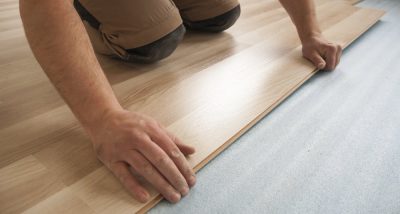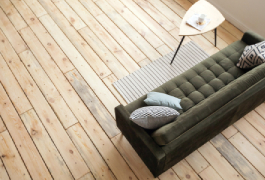- Oneflare /
- Cost Guides /
- Floor Polishing

How much does floor polishing cost in Australia in 2025?
$25 - $60 per m2
How much does floor polishing cost in Australia?
Floor polishing costs in Australia are $25–$60 per sqm, depending on finish, condition, and location.
Key Takeaways
|
Keeping your home’s hardwood floors polished is an understated but important step in maintaining their condition. Habitual polishing helps restore the natural shine of your wood floors while providing a protective coat fit for everyday wear and tear.
How much does floor polishing cost per sqm?
| Disclaimer: Oneflare’s cost estimates come from thorough research on industry and third-party rates. Please only use the listed prices as a benchmark when setting your budget. Moreover, as different areas have local taxes and service fees, the rates listed below are subject to change. |
Floor polishing in Australia depends on several factors, namely the project’s coverage area, floor condition, type of wood, and additional services like staining and repairs. On average, the cost per sqm ranges from $20 to $40 and up to $60, based on the parameters mentioned.
| State | Labour cost per sqm |
| New South Wales | $25–$60 |
| Victoria | $20–$30 |
| Queensland | $25–$40 |
| Western Australia | $25–$35 |
| South Australia | $20–$30 |
Why do I need to polish my hardwood floors?
Polishing your hardwood floors offers many benefits that go beyond aesthetics. Below are four reasons why regular polishing is important for maintaining your floors.
- Restores its shine and visual appeal: Polishing your wood floor restores its natural lustre. This makes the floor look newer and more vibrant.
- Protects against damage: The polishing coat acts as a protective layer against scratches and stains. Because of its durability, this is a great solution in high-traffic areas, like hallways, kitchens, and living spaces.
- Increases floor lifespan: Regular polishing helps prevent premature aging. It significantly reduces damage over time and helps keep your floors looking good for years to come.
- Improves the home’s overall value: Well-maintained hardwood floors add aesthetic appeal. Since they’re highly desirable to potential buyers, they can increase your home’s resale value.
What are the factors affecting floor polishing costs?
Several elements can influence the overall flooring cost when it comes to polishing. Understanding these variables can help you better plan your budget and ensure you achieve the desired finish for your floors.
Location and labour rates
Regional location helps dictate overall labour cost for floor polishing services due to differences in demand, cost of living, and availability of skilled professionals.
Metropolitan states, like Victoria or New South Wales, typically have higher floor polishing costs, ranging from $20 to $40 per square meter, due to increased demand and higher labour rates in the region. Conversely, other states, like Queensland and Western Australia, offer more affordable rates, generally falling between the $20 and $35 range per square meter.
Moreover, experienced professionals or those working with larger companies may charge more than independent contractors. While costlier, their expertise often ensures a higher-quality finish, reducing the risk of mistakes.
Type of flooring
Finishes used for different flooring types also play a big role in their appearance, durability, and cost. Different materials require specific techniques, tools, and products, leading to cost variations.
-
Hardwood floors
- The cost to polish hardwood floors is among the most expensive due to their density and durability.
- Normally, they require specific floor sanding techniques, especially if there are deep scratches or uneven surfaces, which can impact overall costs.
-
Engineered wood
- Made of a thin hardwood veneer over a plywood core, engineered wood is generally less expensive to polish than solid hardwood.
- Homeowners should consider careful sanding and polishing to prevent damaging this type of flooring.
-
Laminate and bamboo floors
- Laminate or bamboo floors typically do not require traditional polishing.
- Wax finishes are a cost-effective solution for maintaining these floors but require frequent upkeep.
Type of floor finishes
The type of finish used on hardwood floors affects how they look, how long they last, and how much care they need. Different finishes offer different benefits, so it’s important to choose the right one for your floors.
- Solvent-based polyurethane provides a highly durable, glossy finish resistant to scratches but emits strong fumes during application, costing $12 to $20 per square meter.
- Water-based polyurethane is an eco-friendly option with minimal odor, but offers slightly less durability than its solvent-based counterpart. It’s a cost-effective choice, priced at $8 to $17 per square meter.
- Oil-based varnishes add a warm, classic tone to your wood, but they need longer drying times and cost $8 to $12 per square meter.
- Wax finishes offer a natural look but you’ll need to maintain them frequently, with prices ranging from $6 to $10 per square meter.
Size of the floor area
The size of the floor area has a major impact on the cost of polishing, as prices are generally calculated per square metre. Larger floor spaces generally have lower per-square-meter rates due to economies of scale, while smaller areas may incur higher costs due to minimum service charges.
For instance, a 20-square-meter area job can cost between $500 and $1,200, while a 50-square-meter space might range from $1,250 to $3,000, and a 100-square-meter floor can cost $2,500 to $6,000. These estimates are influenced by factors like the floor’s condition and the preferred finish type picked by the homeowner.
Accurately measuring your floor’s size is crucial for getting realistic quotes. To calculate the estimated price, multiply the room’s length by its width. Don’t forget to account for alcoves, adjoining rooms, or irregular shapes. Providing this information to service providers allows for more accurate quotes and helps homeowners budget effectively.
Condition of the floor
A polishing job might end up being more expensive if your floor shows visible damage, like deep scratches, stains, and uneven surfaces. The extra steps needed, namely sanding, filling, or spot repairs, not only increase labour time but also add to material costs, as specialised products or treatments may be required.
A professional inspection can help homeowners identify these issues beforehand and plan for the added expenses. Preparing floors in poor condition can add $10–$20 per square meter or more, depending on the severity of the damage and the complexity of the required repairs. Regular maintenance, such as cleaning and polishing, can help minimise these costs over time while extending the life of the flooring.
Additional services
Aside from the floor polishing itself, several service providers offer supplementary services that can enhance the end result. These services may include sanding, staining, repairs, and floor sealing, all of which contribute to maintaining and improving the appearance of your floors.
While these extras can add up to the overall cost, they are often essential for achieving a high-quality, long-lasting finish. Homeowners should factor these potential expenses into their budget when planning a floor polishing project to ensure the best possible outcome.
How to save money when hiring a floor polisher
The cost of having hardwood floors refinished can be expensive, but it can add beauty and value to your home. Here are a few tips to help you save on the cost.
- Compare estimates for different installers.
- Compare the costs of your chosen sealers.
- Remove any nails or other items that might tear the belts before they arrive.
DIY vs hiring a professional for floor polishing
For budget-conscious homeowners, DIY floor polishing can be a cost-saving alternative to hiring professionals. With the right tools and materials, homeowners can avoid labour costs, which can be the most expensive part of a professional service.
While it requires some time investment and basic knowledge of floor care, DIY polishing can still yield satisfactory results, especially for smaller areas or floors in decent condition.
However, hiring a professional for your floor polishing project is often the better option for those seeking high-quality, durable results, particularly for large areas or worn floors. Industry experts have access to advanced tools and techniques that can handle even the most challenging floors, including those with deep scratches or heavy wear.
Additionally, professionals can offer additional services like sanding, repairs, and staining, which may be necessary for restoring the floor’s overall condition.
Ultimately, homeowners are encouraged to weigh which option is the best for them based on their budget, time availability, and desired results.
Breathe new life into your floors
Floor polishing costs can vary depending on several key factors, namely the size of the area, the type of finish, the floor condition, and even your location. What you choose should ultimately depend on your budget, the current state of your floors, and the quality of results you’re aiming for.
Although DIY is a good option for those on a budget or with smaller areas to polish, it requires time, effort, and attention to detail. If you feel you need help or are dealing with a larger area, heavily worn floors, or simply want a professional-grade finish, it’s worth reaching out to a flooring expert for such a tough job. They can ensure your floors look good as new.






